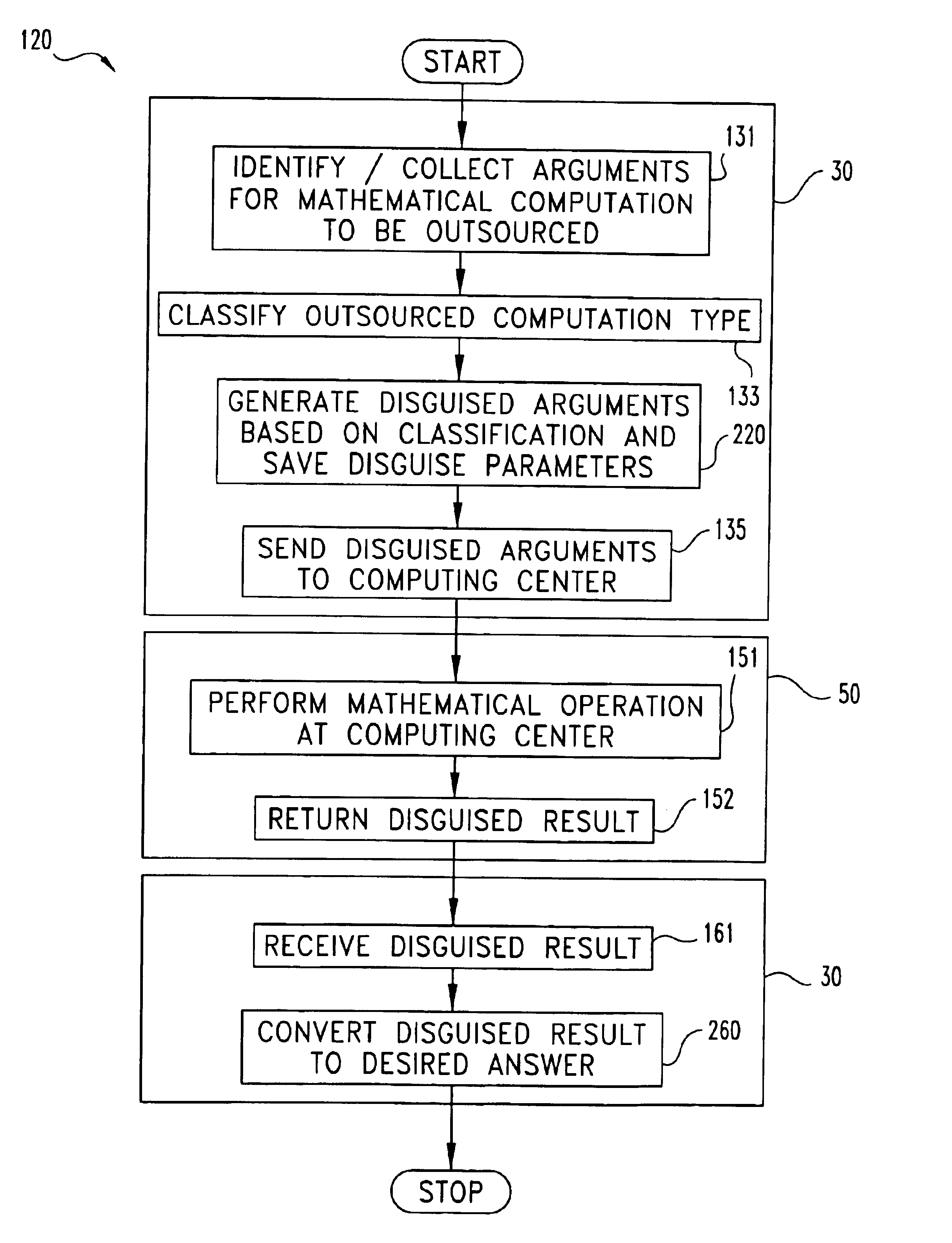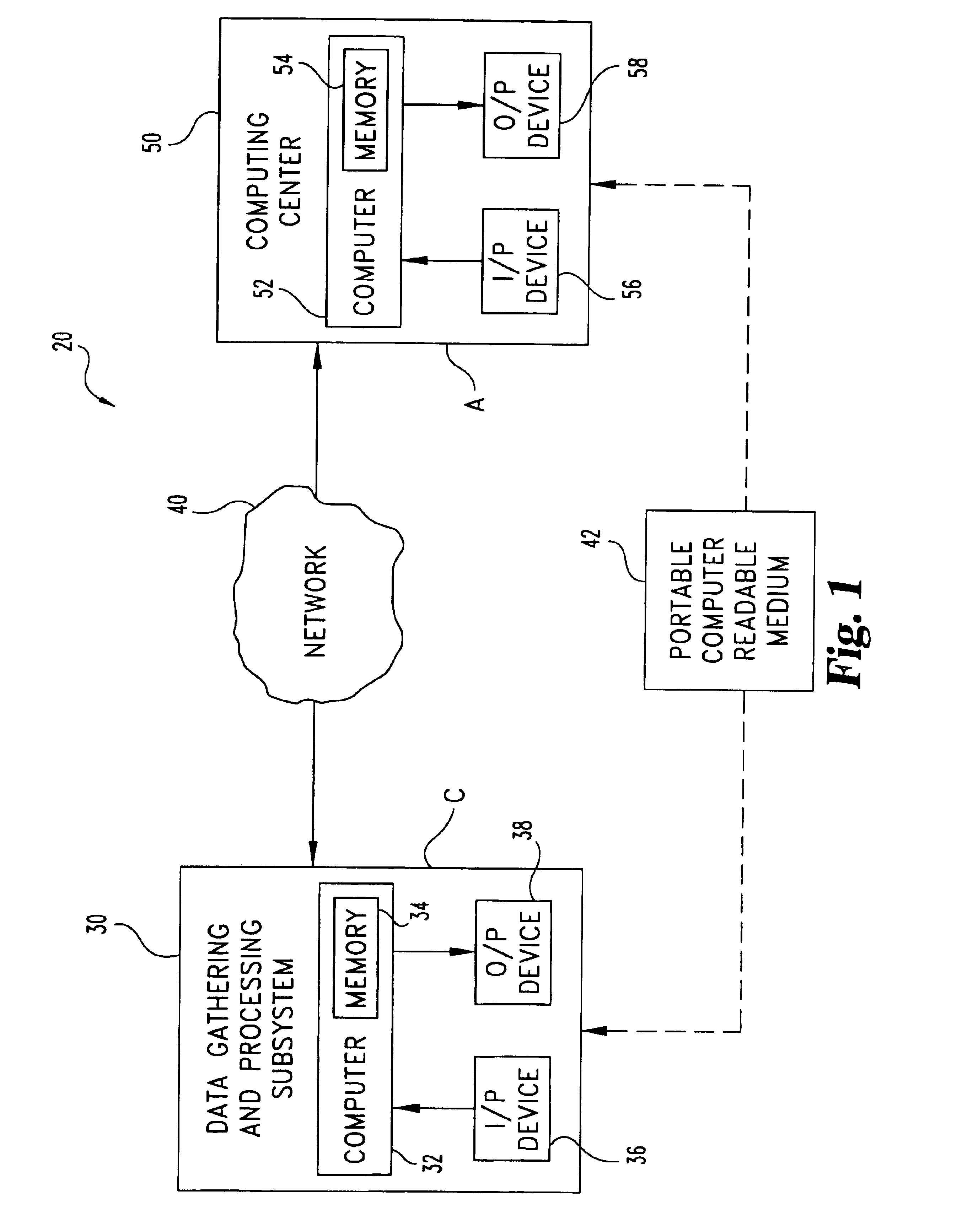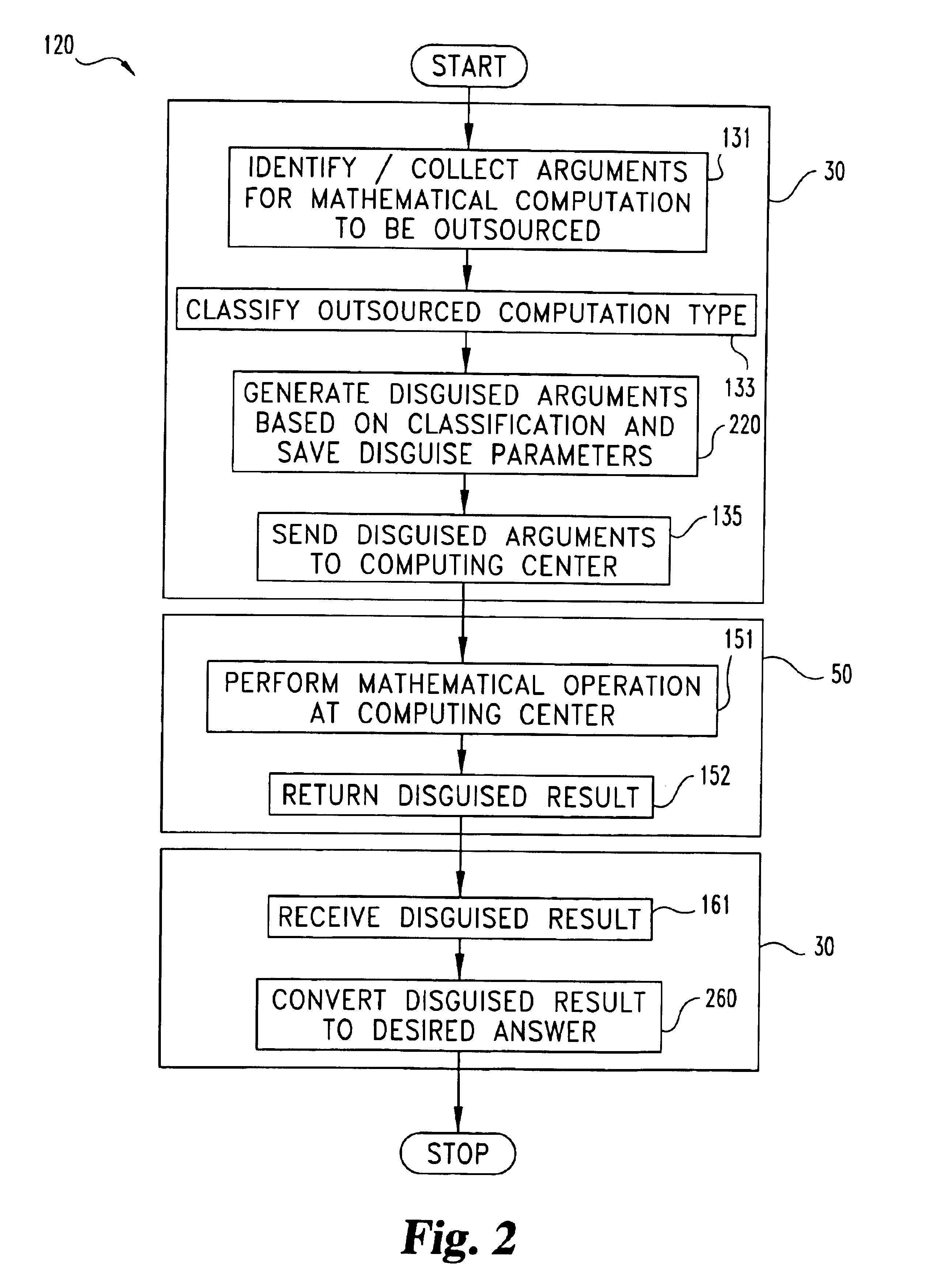Secure computational outsourcing techniques
a computational outsourcing and secure technology, applied in the field of secure computational outsourcing techniques, can solve problems such as the misappropriation of customer data by agents, the massive amount of seismic data, and the computational results that have arisen
- Summary
- Abstract
- Description
- Claims
- Application Information
AI Technical Summary
Problems solved by technology
Method used
Image
Examples
example one
[0074]Matrix multiplication of two n×n matrices M1 and M2 may be readily disguised in accordance with a first example of the present invention designated as disguise procedure DP1. Matrices M1 and M2 are the actual arguments AA to be outsourced. For DP1, the kronecker delta function, δx,y is utilized which equals 1 if x=y and 0 if x≠y. Subsystem 30 performs the following stages a.-c. to prepare disguised arguments DA in accordance with DP1:[0075]a. creates (i) three random permutations π1, π2, and π3 of the integers {1,2, . . . ,n} and (ii) three sets of non-zero random numbers {α1, α2, . . . , αn}, {β1, β2, . . . βn}, and {γ1, γ2, . . . γn};[0076]b. creates matrices P1, P2, and P3 where P1(i,j)=αiδx1(i)j, P2(i,j)=βiδx2(i)j, and P3(i,j)=γiδx3(i)j (these matrices are readily invertible, e.g., P1−1=(αj)−1δπ1−1(i)j); and[0077]c. computes the matrix X=P1M1P2−1(such that X(i,j)=(αi / βj)M1(π1(i), π2(j))), and Y=P2M2P3−1.
Matrices X and Y define the disguised arguments DA for DP1. Subsystem ...
example two
[0079]At the expense of more complex disguise preparation by subsystem 30, a greater degree of security may be provided in a second matrix multiplication example designated as disguise procedure DP2. For DP2, subsystem 30 performs the following stages a.-c.:[0080]a. compute matrices X=P1M1P2−1 and Y=P2M2P3−1 in accordance with disguise procedure DP1;[0081]b. select two random n×n matrices S1 and S2 and generate four random numbers β, γ, β′, γ′ such that (β+γ)((β′+γ′)(γ′β−γβ′)≠0; and[0082]c. compute the six matrices X+S1, Y+S2, βX−γS1, βY−γS2, β′X−γ′S1, β′Y−γ′S2.
The following three matrix multiplications are then outsourced by subsystem 30 to computing center 50: (a) W=(X+S1)(Y+S2); (b) U=(βX−γS1)(βY−γS2); and (c) U′=(β′X−γ′S1)(β′Y−γ′S2). The results are returned by computing center 50 to subsystem 30. Subsystem 30 then locally computes matrices V and V′; where V=(β+γ)−1(U+βγW) and V′=(β′+γ′)−1(U′+β′γ′W). It should be appreciated that V=βXY+γS1S2, and V′=β′XY+γ′S1S2. Subsystem 30 out...
example three
[0083]Disguise procedure DP3 as follows provides a third example of a disguised outsourced matrix multiplication. DP3 utilizes DP2 and further imposes control on the length of random number sequences generated to provide a more robust random number generator disguise. For DP3, subsystem 30 defines L as the maximum length for a sequence from a random number generator so that M=[m / L] is the number of distinct random number generators 232 needed. Let G(A(i)), i=1,2 . . . , be one-time random number generators. Each random generator has a vector A(i) of 12 parameters / seeds. Correspondingly, non-zero vectors are provided for the three matrices P1, P2, P3 used to disguise M1 and M2. Computing center 50 receives X=P2M1P2−1 and Y=P2M2P3−1 for the outsourced multiplication and returns matrix Z to subsystem 30. This approach further hampers the ability to successfully impose a statistical attack. Further, as long as computing center 50 is without information about M1 and M2, it appears a stat...
PUM
 Login to View More
Login to View More Abstract
Description
Claims
Application Information
 Login to View More
Login to View More - R&D
- Intellectual Property
- Life Sciences
- Materials
- Tech Scout
- Unparalleled Data Quality
- Higher Quality Content
- 60% Fewer Hallucinations
Browse by: Latest US Patents, China's latest patents, Technical Efficacy Thesaurus, Application Domain, Technology Topic, Popular Technical Reports.
© 2025 PatSnap. All rights reserved.Legal|Privacy policy|Modern Slavery Act Transparency Statement|Sitemap|About US| Contact US: help@patsnap.com



